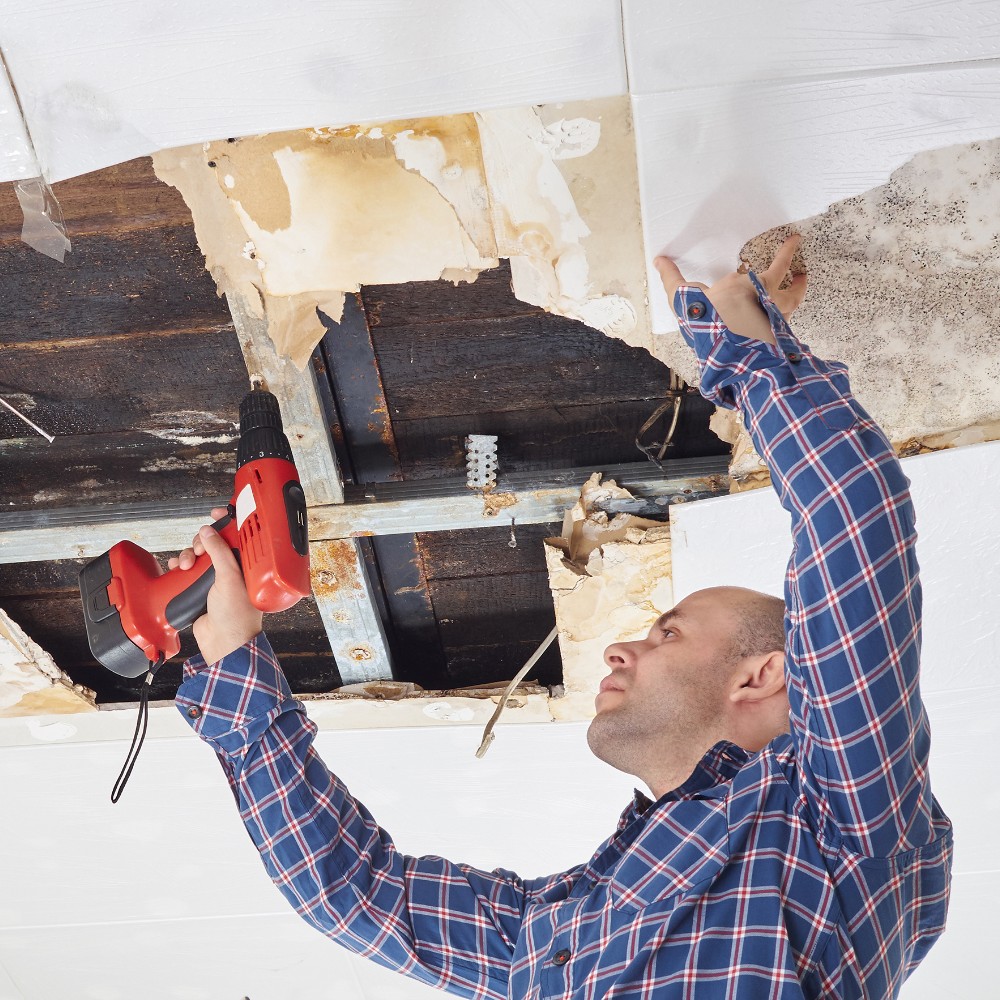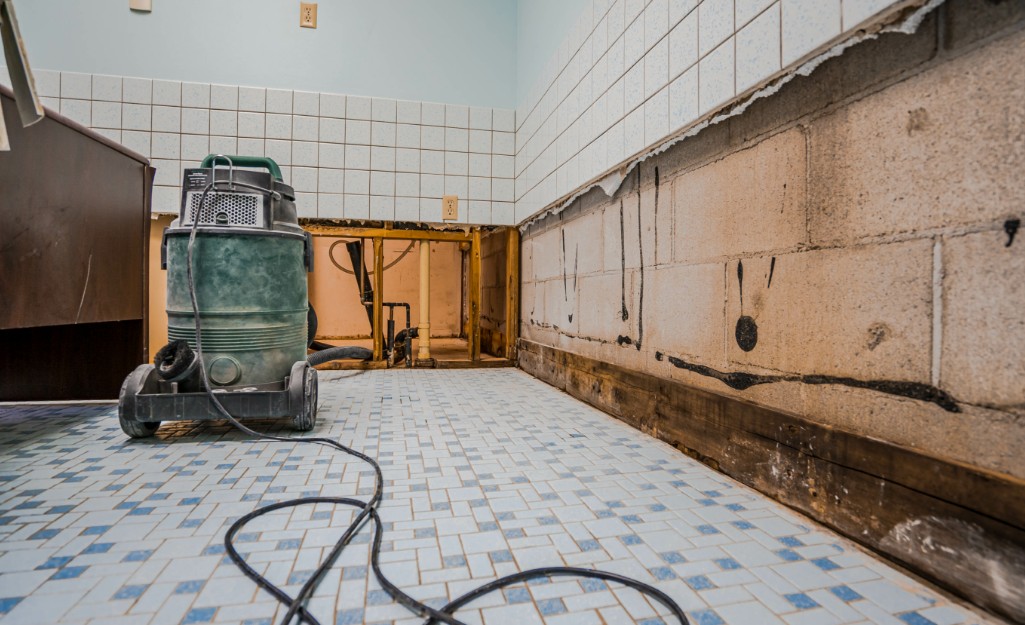Essential tips for safer Flood Cleanup Services results
Water Damage Restoration 101: Recognizing the Process and Expense
Water damage can strike unexpectedly, leaving property owners in a state of complication. Comprehending the repair procedure is necessary for effective recovery. From assessing the damage to selecting the right company, each step influences the general end result and cost. Elements such as the kind of water damage and necessity also play a substantial role. What are the specific strategies used in remediation, and just how can one prepare for prospective expenditures?
Sorts Of Water Damage

Preliminary Assessment and Inspection

Water Removal Techniques
Adhering to the first analysis, efficient water removal techniques are employed to reduce damage and prevent more issues. These strategies include using specific tools such as industrial-grade vacuum cleaners and completely submersible pumps - Water Extraction And Drying. The option of method depends on the quantity of water existing and the kind of products influenced. For standing water, submersible pumps are usually made use of for fast removal, while vacuum cleaners are suitable for removing water from carpetings and furniture. In addition, progressed techniques like water removal mats might be utilized for hard-to-reach locations - Flood Cleanup Services. The goal is to eliminate as much water as possible, reducing the potential for mold and mildew growth and architectural damage. Prompt and reliable water extraction is necessary in the general water damage remediation process
Drying and Dehumidification Process
Once the water removal is total, the drying and dehumidification procedure becomes critical to bring back the afflicted location. This phase typically uses industrial-grade dehumidifiers and air movers to successfully reduce dampness levels. The dehumidifiers pull in wet air, removing excess moisture, while air moving companies circulate air to speed up dissipation. Monitoring devices is often used to track moisture and temperature level levels, guaranteeing ideal drying problems. The duration of this process can vary depending on the degree of the water damage and ecological variables. It is necessary to extensively dry all impacted products, including walls, flooring, and home furnishings, to avoid mold and mildew development and structural damage. Correct execution of this step is important for an effective restoration result.
Cleaning Up and Sanitizing Damaged Locations
As soon as the drying out process is complete, a complete first analysis and assessment of impacted locations is crucial to recognize contamination degrees. Efficient cleaning techniques and ideal products have to after that be utilized to eliminate particles and discolorations. Sanitization and disinfection approaches are necessary to guarantee that dangerous virus are eliminated, bring back the room to a safe problem.
First Assessment and Inspection
Prior to beginning any kind of restoration initiatives, a comprehensive first evaluation and evaluation of the influenced areas are essential for efficient cleaning and disinfecting. This process entails identifying the extent of water damage, determining the resource of the water breach, and reviewing the materials affected. Examiners usually search for indicators of mold development, structural honesty issues, and harmed possessions. The analysis likewise includes examining wetness levels utilizing specific devices to ensure no concealed water pockets stay, as these can bring about further problems. Documenting the searchings for is important for intending the following action in the remediation procedure. An in-depth initial assessment allows reconstruction professionals to devise a targeted method for reliable cleaning and sanitizing, eventually minimizing damage and health dangers.
Cleansing Strategies and Products
Effective cleaning and sanitizing of water-damaged areas need a range of items and strategies tailored to the particular products influenced. For porous surfaces like drywall and carpets, removal methods are essential to get rid of excess moisture, followed by deep cleaning with specialized cleaning agents. Non-porous products such as floor tile or steel can be cleansed making use of commercial-grade cleansers that properly get rid of impurities. Heavy steam cleansing is one more reliable strategy, particularly for carpetings and furniture, as it uses high temperatures to get rid of bacteria and mold and mildew (Flood Cleanup Services). In addition, environmentally friendly items are increasingly popular for their safety and security and efficiency - Water Damage Restoration. Inevitably, selecting the suitable cleaning methods and products not only assures instant tidiness however additionally help in avoiding further damage and health hazards related to water intrusion
Sanitization and Disinfection Techniques
When attending to water damage, proper sanitization and disinfection approaches are important to guarantee the safety and security and health of the afflicted atmosphere. After preliminary cleaning, surfaces must be treated with ideal anti-bacterials to eliminate microorganisms, mold and mildew, and bacteria that flourish in damp problems. Usual methods include the use of EPA-approved chemical disinfectants, which can be applied with splashing or wiping strategies. Furthermore, ultraviolet (UV) light systems can effectively sanitize locations by reducing the effects of microorganisms without extreme chemicals. The option of approach typically depends on the kind of materials affected and the extent of contamination. Ultimately, detailed sanitization not just restores a secure space however additionally helps protect against future health and wellness dangers associated with lingering dampness and mold growth.

Fixings and Restoration Options
Examining the damage brought on by water exposure is visit this site important for establishing the appropriate repairs and repair alternatives. Property owners may encounter numerous issues, including harmed drywall, distorted floor covering, and endangered structural elements. Depending on the level of the damage, repair work might involve changing sections of drywall, installing new flooring, or enhancing structural light beams. In cases of severe damage, full replacement of afflicted materials may be needed. In addition, specialist conservators commonly advise making use of dampness meters to analyze surprise dampness degrees before picking the ideal strategy. It is necessary to act immediately to avoid mold growth and further wear and tear. Selecting the best alternatives not only restores the home but additionally guarantees lasting security and functionality.
Factors Affecting Restoration Expenses

The degree of water damage directly affects the restoration sets you back homeowners can anticipate to sustain. Elements such as the source of the water, the duration of direct exposure, and the affected materials greatly affect rates. Clean water damage from a damaged pipeline is typically less pricey to recover compared to damage triggered by sewer. In addition, the degree of contamination determines the demand for specialized cleansing and disposal services, even more increasing expenses. Geographical location likewise plays a function, as local labor prices and availability of repair services can differ. Ultimately, the necessity of the response influences prices; quicker interventions normally cause lower general costs by protecting against more damage. Comprehending these elements is important for property owners when estimating remediation expenses.
The three primary types of water damage are classified based on contamination levels: tidy water, grey water, and black water. A thorough first evaluation and evaluation are vital actions in the water damage repair process. For standing water, completely submersible pumps are normally used for rapid elimination, while vacuums are perfect for removing water from carpetings and upholstery. The level of water damage directly impacts the repair costs home owners can expect to incur. Tidy water damage from a busted pipe is generally much less expensive to restore contrasted to damage caused by sewage.